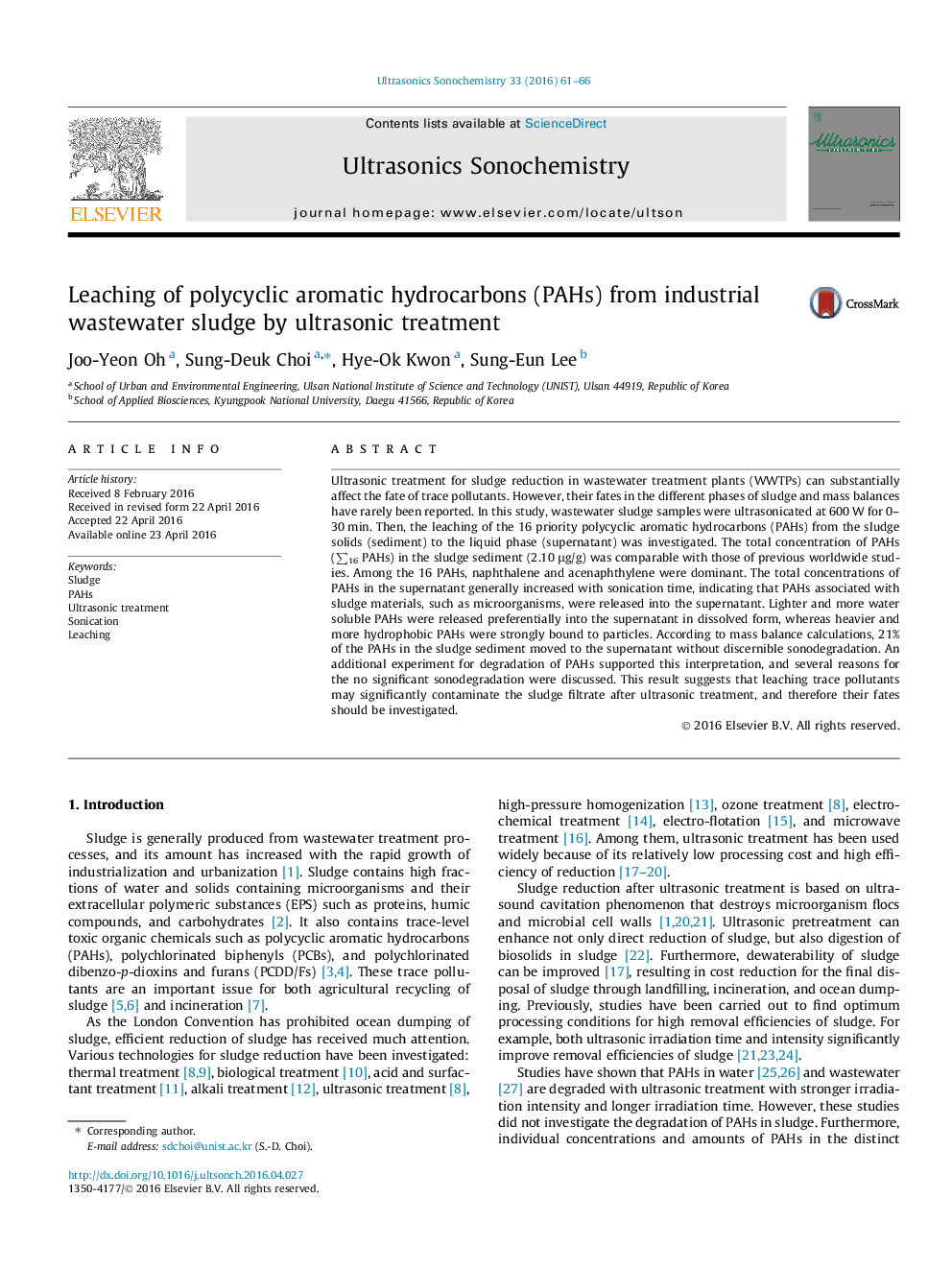| کد مقاله | کد نشریه | سال انتشار | مقاله انگلیسی | نسخه تمام متن |
|---|---|---|---|---|
| 1269302 | 1496871 | 2016 | 6 صفحه PDF | دانلود رایگان |
• PAHs were leached from sludge solids to the liquid phase by ultrasonic treatment.
• The fate of PAHs was determined by their interaction with microorganisms in sludge.
• Lighter and more water soluble PAHs were released preferentially to the supernatant.
• Heavier and more hydrophobic PAHs were bound strongly to particles.
• Sonodegradation of PAHs was negligible, and there was a simple phase transition.
Ultrasonic treatment for sludge reduction in wastewater treatment plants (WWTPs) can substantially affect the fate of trace pollutants. However, their fates in the different phases of sludge and mass balances have rarely been reported. In this study, wastewater sludge samples were ultrasonicated at 600 W for 0–30 min. Then, the leaching of the 16 priority polycyclic aromatic hydrocarbons (PAHs) from the sludge solids (sediment) to the liquid phase (supernatant) was investigated. The total concentration of PAHs (∑16 PAHs) in the sludge sediment (2.10 μg/g) was comparable with those of previous worldwide studies. Among the 16 PAHs, naphthalene and acenaphthylene were dominant. The total concentrations of PAHs in the supernatant generally increased with sonication time, indicating that PAHs associated with sludge materials, such as microorganisms, were released into the supernatant. Lighter and more water soluble PAHs were released preferentially into the supernatant in dissolved form, whereas heavier and more hydrophobic PAHs were strongly bound to particles. According to mass balance calculations, 21% of the PAHs in the sludge sediment moved to the supernatant without discernible sonodegradation. An additional experiment for degradation of PAHs supported this interpretation, and several reasons for the no significant sonodegradation were discussed. This result suggests that leaching trace pollutants may significantly contaminate the sludge filtrate after ultrasonic treatment, and therefore their fates should be investigated.
Journal: Ultrasonics Sonochemistry - Volume 33, November 2016, Pages 61–66
